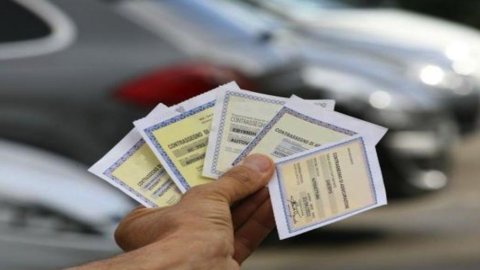The average price of third party liability insurance in Italy is dropped by 25% in the last six years. According to the latest data that emerged from the IVASS bulletin of October, between 2012 and 2018 the value of car insurance recorded a constant decline, following the adoption of a series of primary and secondary regulatory measures.
From the surveys ofInsurance Supervisory Institute, a 1,5% reduction still emerged in 2019 compared to the first half of the previous year. The comparison with other European countries is also positive: the Italy-Europe price differential has dropped by 52% in the last five years, data collected between 2012 and 2017.
There is also a drop on the issue of territorial differences: in the last six years the differential in the price of car insurance between the various Italian provinces has fallen by over 54% between Naples and Oristano. The two cities are respectively the province in which the highest and lowest average price level of the motor liability is calculated. Insurance companies are careful not to disseminate the method used to decide the price of their policies, but it is possible to resort to econometric models capable of showing with a certain reliability which are the variables that affect the decisions of the insurance companies. These variables differ from province to province and concern the frequency of claims, the average cost of claims, the incidence of the risk of fraud, the density of the population, the age of the vehicle, the frequency of litigation.
These elements analyzed together explain why in Naples the average premium in 2017 was 624 euros, Aosta 299, in Benevento 386, and in Campobasso 309. In recent quarters, Oristano is the province with the lowest premium in Italy equal to 295,7, XNUMX euros, followed by Aosta, Pordenone, Enna, Biella, Vercelli, Udine, Potenza, Belluno, Cuneo, Gorizia. After that of Naples, the most expensive provinces are instead Prato, Caserta, Pistoia, Massa Carrara, Florence, Reggio Calabria, Crotone, Pisa and Rome, with the latter being much more expensive than another metropolis like Milan. It is not the differences between the north and south of the country, but rather those determined by the frequency of claims, their average cost or population density that explain why in Naples the policy is superior to that of Oristano.
How is the driver who is never involved in an accident but who lives in a province where the cost of insurance is high and vice versa treated?
The average premium of Naples is however higher than that of the province of Oristano and it is here that the intervention of the trade associations takes place, which for some time have been asking the Government for a discussion on the measures to be taken to reduce the territorial gap on the payment of motor liability.
Under consideration by Parliament is the DdL 780 which revises two relevant articles on the subject: 132-ter and 134. In the bill, the objectives of the law are: to reduce or cancel the differences in treatment between residents in different areas, as has already happened in some European countries, to create a more equitable and balanced offer of compulsory insurance, to make the companies burden the differences in claims and settlement efficiency, reduce motor liability rates for virtuous citizens.
In fact, the reform proposal establishes the list of provincial average premiums broken down by merit class and risk level and provides as a base premium for those who have not committed any claims in the last 2 years, the average premium of the 3 least expensive provinces, possibly increased up to 20 % based on the riskiness of the province, to take into account different local situations.
The second part of the 780 law proposal concerns the so-called Bersani Law: article 134 paragraph 4 bis gives the possibility of receiving the most favorable risk class of a family member with a vehicle of the same type in the case of a new contract, i.e. when a new vehicle is purchased. The reform here intends to extend this possibility also to the renewal of an old contract and also to the passage from one type of vehicle to another, provided that the family member has not had any accidents in the last 5 years. Objective: to create a class of family merit, rather than relating only to the individual subject.
Among the innovations, in the hearing before the Finance Commission of the Chamber of Deputies in the Chamber, the councilor of Ivass Riccardo Cesari underlined the adoption of a series of innovative measures which over the next few months should represent factors for modernizing the sector: the 'integrated anti-fraud archive, a public system for listing motor liability, implementing decrees on the black box on the car.
Also present at the hearing in the Chamber were representatives of Ania, the national association of insurance companies, which has been critical of the proposed amendments to the law currently in force, arguing that the proposed amendment risks increasing the rates in areas with the lowest accident rate, for newly licensed drivers and those who have also caused only one accident in the last two years. Also present theadconsum, an association in defense of consumers, which, positively, proposed the introduction of a national tariff for vehicle repairs which “takes into consideration the quality standards of the repair centers through the identification of three tariff levels. This would make it possible to give greater uniformity also to the costs of claims on a national scale".





